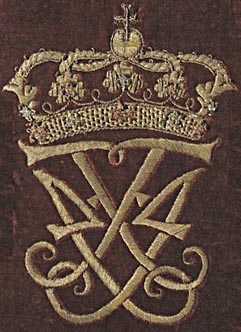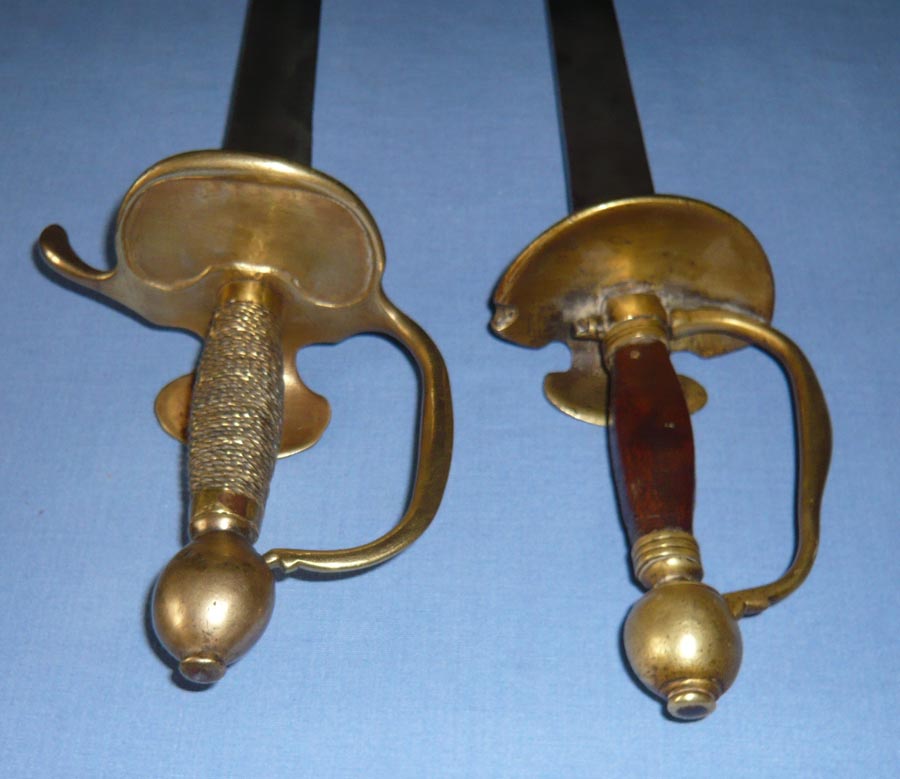M1705 Soldatkorde
The M1705 soldatkorde comes with two different grips, one in iron and one in brass. The one in iron usually had a twin edged straight blade marked F4 (Fredrik IV) in mirror monogram – much similar to the blades on the M1701 soldatkorde (hint: I don’t have the iron grip one in my collection as of now). The brass gripped one came with a very modern 1850-looking saber blade, also with the F4. This blade is fairly scarce and almost nonexistent in Denmark.
The picture seemingly shows two of these M1705, both with the correct and scarce blade and both with the little shell that was in fashion at the time. Well, only one of them is actually a true M1705, the other one has an older grip that has been modified to look like the M1705 grip.
Norway was an extremely poor country at the time, so instead of having new swords made, one modified older grips and fitted them with a replacement blade from Denmark. The picture of the grips show that the guard on the right hand sword goes above the plate instead of being part of it as on the original M1705 to the left. Fashion was important and the military had to follow what was fashionable at the time.
I have three of these blades in my collection, the third fitted with a farmer sword, a tessak, grip. It was mandatory for the Norwegian farmer to be armed, by the law and according to the kings orders. Every second year the farmers had to show they had their arm’s and that these were in good working order (Våpenting). If not, you were heavily fined. I can picture the poor farmer having a tessak with a broken blade and how he desperately needed a replacement blade before the next Våpenting.
 The monogram on these early 1700’s blades most often had a very shallow engraving and it is therefor often difficult to find or to find out what it really looks like. The picture shows a sown version of the F4 mirror or double monogram (directly translated from Norwegian) and on the blade on the picture below you can just about see a little of it.
The monogram on these early 1700’s blades most often had a very shallow engraving and it is therefor often difficult to find or to find out what it really looks like. The picture shows a sown version of the F4 mirror or double monogram (directly translated from Norwegian) and on the blade on the picture below you can just about see a little of it.



